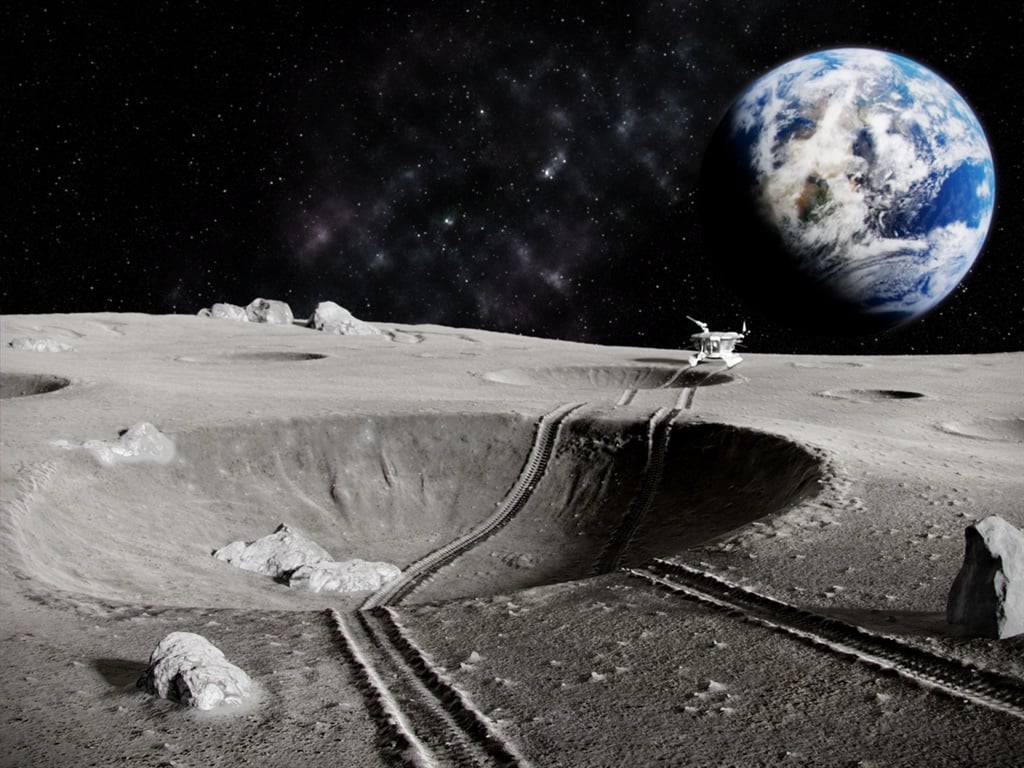Having considered the precarious state of our planet’s environment in the three preceding articles, what are humanity’s options if we wreck the Earth and find ourselves racing against the clock to save our civilisation from extinction?
Some options might include:
1. Retreat underground into a network of self-sufficient bunkers;
2. Migrate into huge isolation domes spread around the Earth’s surface;
3. Colonise a fleet of space stations orbiting the Earth;
4. Colonise the Moon;
5. Colonise Mars; or
6. Colonise an exoplanet (a planet outside our solar system).
Options 1 and 2: Bunkers and domes
These two options are without doubt the simplest in terms of our projected technological capability, access to resources and execution in a relatively short space of time. However, living in a network of bunkers and domes would have unimaginable implications for human society.
First of all, it’s highly improbable these structures alone would be able to support the world’s entire population. Secondly, it’s unknown how human society would adapt to life in these confined, fragile and highly controlled environments. And thirdly, the life-supporting infrastructure and its population would face a myriad of unchartered technical and political challenges.
It would be a turbulent social experiment to say the least.
Option 3: Space Stations
An artistic representation of a space station (Image: iStock)
The unfortunate truth is that building a fleet of space stations is not like building a fleet of ocean liners. To put this statement into perspective, consider the following:
- The world’s largest ocean liner, the Harmony of the Seas, cost US$1,35 billion and took almost three years to construct, whereas the International Space Station (ISS) cost US$200 billion (150 times more) and took almost 20 years to complete;
- The Harmony of the Seas can accommodate 8 880 people (crew and passengers), whereas the ISS accommodates just six (maximum of nine);
We must also appreciate that the ISS has a zero-gravity environment and requires constant servicing and resupply. From a science fiction perspective, our revered multi-national space station is horribly primitive.
The building of a space station that could support human life independently of Earth’s resources will, unfortunately, remain beyond our civilisation’s capability for at least another century. Not to mention that should our population reach nine billion, we would need over one million ‘Harmony of the Seas’ space stations to relocate us all off-planet.
Option 4: The Moon
A view of Earth from the moon. (Image: iStock)
Creating a habitable base on the Moon is complicated by numerous factors, some of which include: the Moon’s day/night cycle is equivalent to 28 days on Earth; temperatures fluctuate between 100°C in the day and -170°C at night; it’s completely barren and has no atmosphere; and gravity on the surface of the Moon is six times weaker than on Earth.
A Moon base would also have to be a massive, highly sophisticated life-supporting structure to keep even a small human colony alive. Not to mention the controversy that would surround the selection of the colony population.
Option 5: Mars
Mars is eerily similar to Earth in a few ways: its day/night rotation cycle is 23 hours; its tilt is 25 degrees meaning it has similar seasons to Earth; it has subterranean water; and its atmospheric pressure is 60% that of Earth’s.
But it’s also vastly different in that its atmosphere is 96% Carbon Dioxide; gravity is 62% less than Earth’s; its average surface temperature is much colder than on Earth; and there’s no magnetic field to protect the planet’s surface from the lethal bombardment of radiation emitted by our Sun.
These major shortcomings aside, mankind remains optimistic that we will one day colonise Mars. One person who epitomises this dream is Elon Musk. In his recent SXSW interview he made clear SpaceX’s intention to start a colony on Mars that could one day grow into a city.
He compared the challenge to Ernest Shackleton’s expedition to the Antarctic, which was advertised as follows: "Men wanted for hazardous journey. Low wages, bitter cold, long hours of complete darkness. Safe return doubtful. Honour and recognition in event of success."
An artistic representation of what SpaceX envisions a city on Mars would look like (Image: SpaceX)
In Elon Musk’s own words, "… it will be difficult, dangerous and there’s a good chance you’ll die." Although Musk should be admired for his ambition, it is likely that human attempts to colonise Mars this century will only confirm the following:
- Sustaining human life on Mars is a whole lot harder than we anticipated;
- Colonists face unfathomable hardship in their never-ending effort to survive;
- The costs, losses and danger to human life are prohibitively high;
- Our technology is centuries, if not millennia, away from mass-colonising another planet;
- Life on Mars will never match what we have here on Earth; and
- That we are foolish to take the Earth and its huge diversity of life for granted.
Option 6: Exoplanets
Science fiction films appear to have lulled humanity into te false sense of security. They imply that once we’ve wrecked the Earth, we’ll be able to fly off into the depths of space to colonise one of these habitable exoplanets that astronomers keep finding in the vicinity of our solar system.
One particular candidate, Proxima Centauri b, stands out above all other exo-planets because of its ‘proximity’ to Earth. It exists in the closest star system to our Solar System – Alpha Centauri – which lies 4,22 light years away from Earth.
Very little is known about this exo-planet other than it resides in the potential habitable zone of its host star, Proxima Centauri, and is approximately 30% larger than Earth. However, assuming the infinitesimal chance the planet was found to be habitable and capable of supporting human life, we would immediately be faced with another challenge … how to get there.
To put this quandary into perspective, we have to use the grapefruit analogy:
Shrink our Sun down to the size of a grapefruit. The Earth would be the size of a pinhead floating 14 metres away from the Sun, with the Moon circling 3,6 cm away from the Earth. Note, that at this point in time, the furthest any human being has travelled is between the Earth and the Moon … just 3,6cm. For interest sake, Mars is floating 23 metres away from the grapefruit.
On this scale, the exoplanet Proxima Centauri b is floating 3 730 km away from Earth – the flight distance between Johannesburg and Nairobi. Another potentially habitable exo-planet, Gliese 667 Cc is floating 20 874 km away from our Earth pinhead – the flight distance between Johannesburg and Hawaii. And so far we’ve managed 3,6 cm.
It would be good to point out that Voyager 1, launched back in 1977, is now just 1,64 km away from our Earth pinhead. At its current speed of 61 000 km/h, it would take over 70 000 years to reach Proxima Centauri b.
Until such time as we invent the ‘warp drive’, colonising a planet outside our solar system will remain firmly in the realms of false hope and science fiction.
Reality check
The late Stephen Hawkins recently told BBC News: "We are close to the tipping point where global warming becomes irreversible. Trump's action (withdrawing from the Paris Climate Accord) could push the Earth over the brink, to become like Venus, with a temperature of 250 degrees, and raining sulphuric acid."
The sad reality is that our civilisation might face this fate on Earth long before the technology exists for us to save even a fraction of our enormous human population. That is why we need to take a step back and reclassify the Earth as our 'Harmony of the Cosmos' space station, that keeps us all alive in this otherwise inhospitable universe.
In truth, there’s only one option available to us … not to wreck the Earth in the first place.
- Robert J. Traydon is a BSc graduate of Engineering and the author of ‘Wake-up Call: 2035’. He’s travelled to over 40 countries across six continents and worked in various business spheres. His articles explore a wide range of controversial and current affairs from a contrarian perspective.
Disclaimer: News24 encourages freedom of speech and the expression of diverse views. The views of columnists published on News24 are therefore their own and do not necessarily represent the views of News24.




 Publications
Publications
 Partners
Partners




























